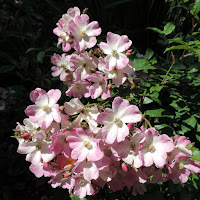Summer – long, warm days, summer fruit, travel, a good book,
walks on the beach. One of the great betrayals of adulthood is no summer
vacation! For most of us, life continues, regardless of the season. But I
remember as a child the pure pleasure of anticipating three months of summer
vacation stretching before us, with all its potential.
 |
| Outdoor office |
|
 |
| Swimming in San Ramon |
|
 |
| Outdoor cooking |
|
 |
| Garden harvest |
|
I liked school well enough, but relished the change of pace
of summer vacation. I looked forward to hours of reading, exploring the
woods and tide flats, and playing baseball and badminton with the
neighborhood kids (in Southeast Alaska, we could play late into the evening, in
full daylight). I also loved our family camping trips into the interior of
Alaska and Canada; the cross country road trips to Minnesota and Wisconsin; and
the extended stays in hot and sunny Southern California with my grandparents.
 |
| Preserving - blueberry jam |
|
 |
| Preserving - grated zucchini |
|
 |
| Exploring uptown Oakland |
|
 |
| Exploring the Northern Coast |
|
Now, as an adult, I still look forward to the days of summer,
even though work and responsibilities continue. Here in the San Francisco Bay
Area, we take our activities outside. We live and cook on the patio, work in the
garden, make jam with summer fruit, spend the afternoon reading or swimming, make local excursions or take long weekends, and
enjoy time with family and friends. Possibly the time is even sweeter, knowing
it is a rare commodity.






















